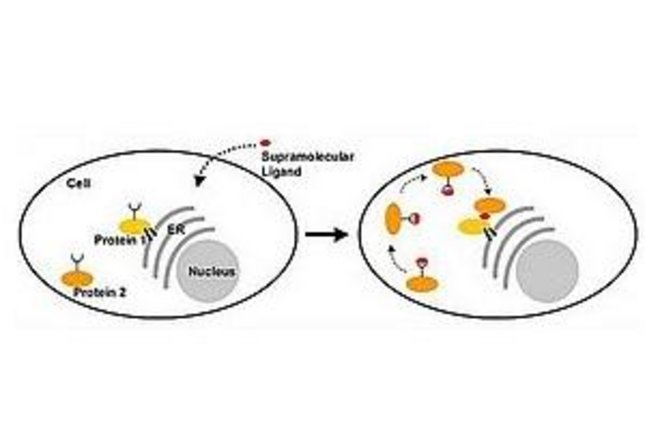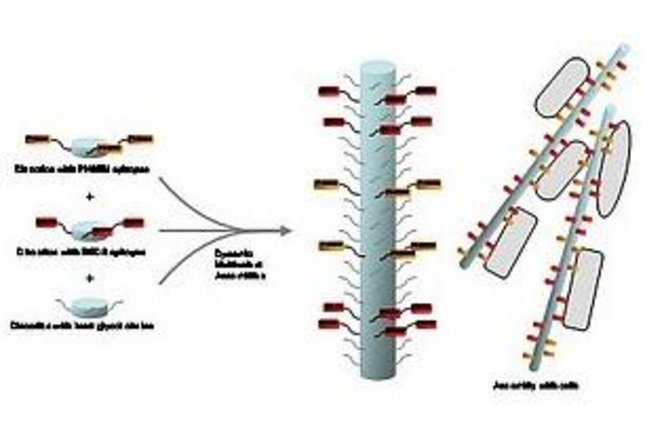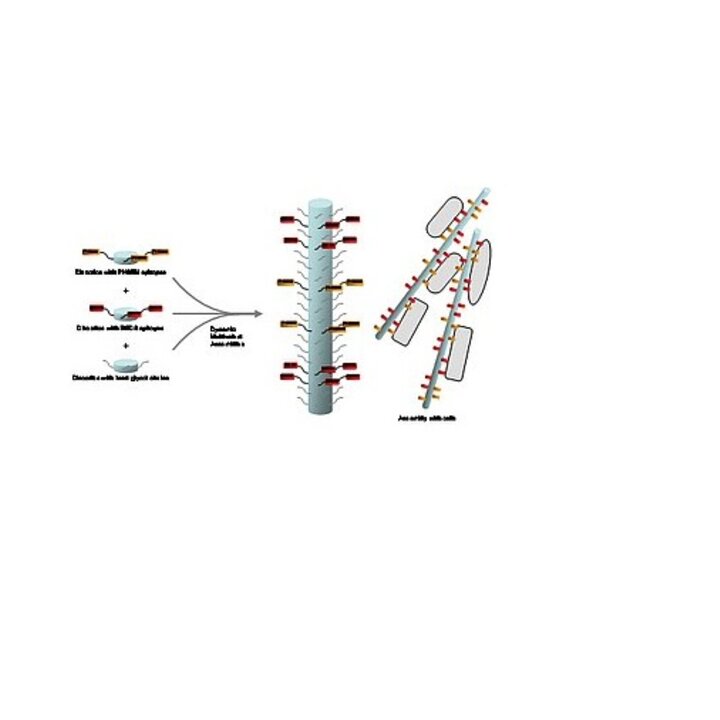Supramolecular chemistry deals with molecular architectures that are assembled by the reversible interaction of two or more chemical species via non-covalent intermolecular forces. Research in supramolecular chemistry has moved from the investigations of the basis of molecular recognition all the way to control and utilization of self organization by design.
In particular in the fields of material science, nanoscience, and nanotechnology designed supramolecular systems have proven to provide successful entries in modulating and controlling materials properties and functions. In biological systems all intermolecular and most intramolecular interactions are supramolecular.
In contrast to the application of self-organization for the design and development of functional (nano)materials, supramolecular chemistry has rarely been applied to study and modulate biological phenomena. We aim to combine synthetic supramolecular architectures with biology to provide entries for studying, influencing and targeting biological phenomena.

Modulation of supramolecular architectures
Supramolecular chemistry utilizes reversible noncovalent interactions to assemble molecules into multimolecular complexes. Supramolecular architectures are conformational unique and can be modulated with external elements such as light, temperature, pH or ligands. We are investigating supramolecular architectures as modulators of protein-protein interactions. By modification of proteins with supramolecular elements, the localization and interaction partners of the protein can be controlled with supramolecular stimuli.

Designing supramolecular systems
We also design supramolecular system that self-organize as multivalent scaffolds for interactions with cells. We develop multivalent systems with the unique ability to accommodate to the receptors in situ using the advantages of supramolecular architectures. We use disc shaped molecules with a N-N’-diacylated 2,2'-bipyridine-3,3'-diamine-scaffold which form helical supramolecular architectures in water. These molecules are functionalized with ligands binding to e.g. viruses or bacteria.
